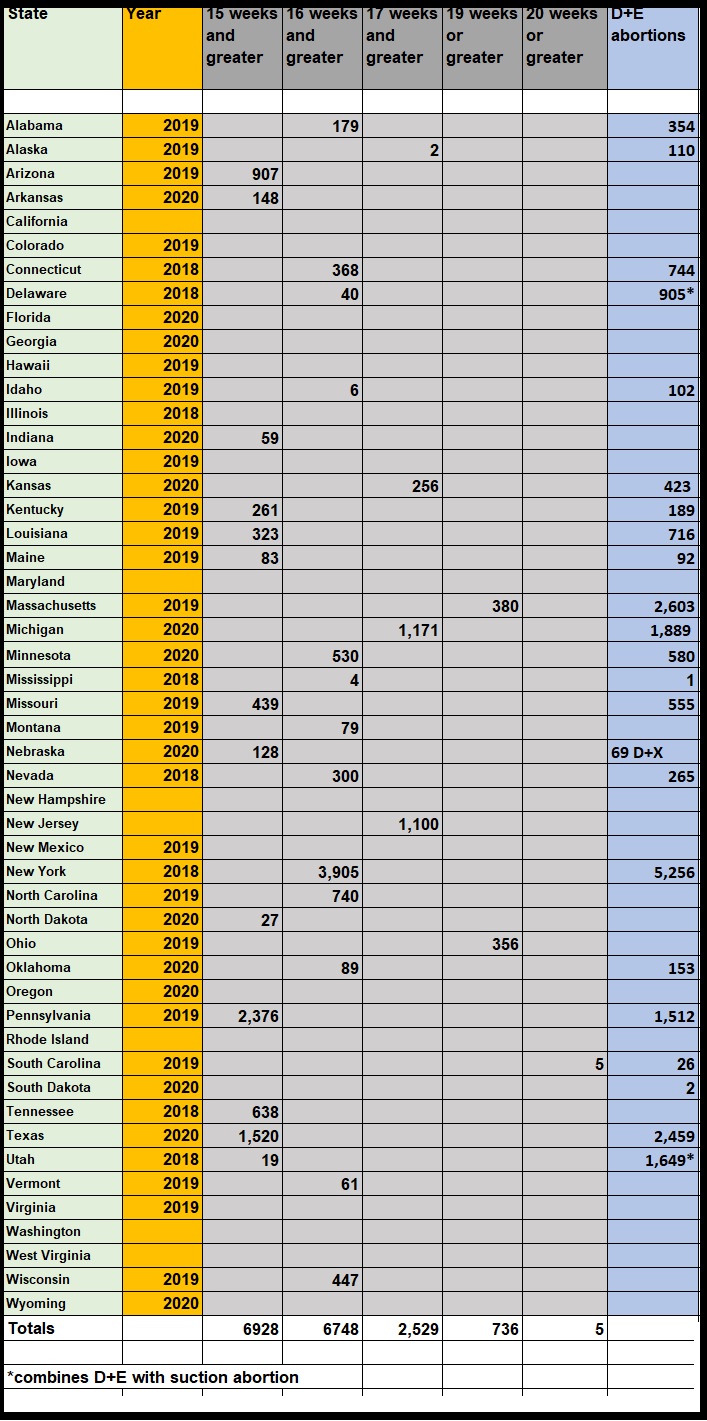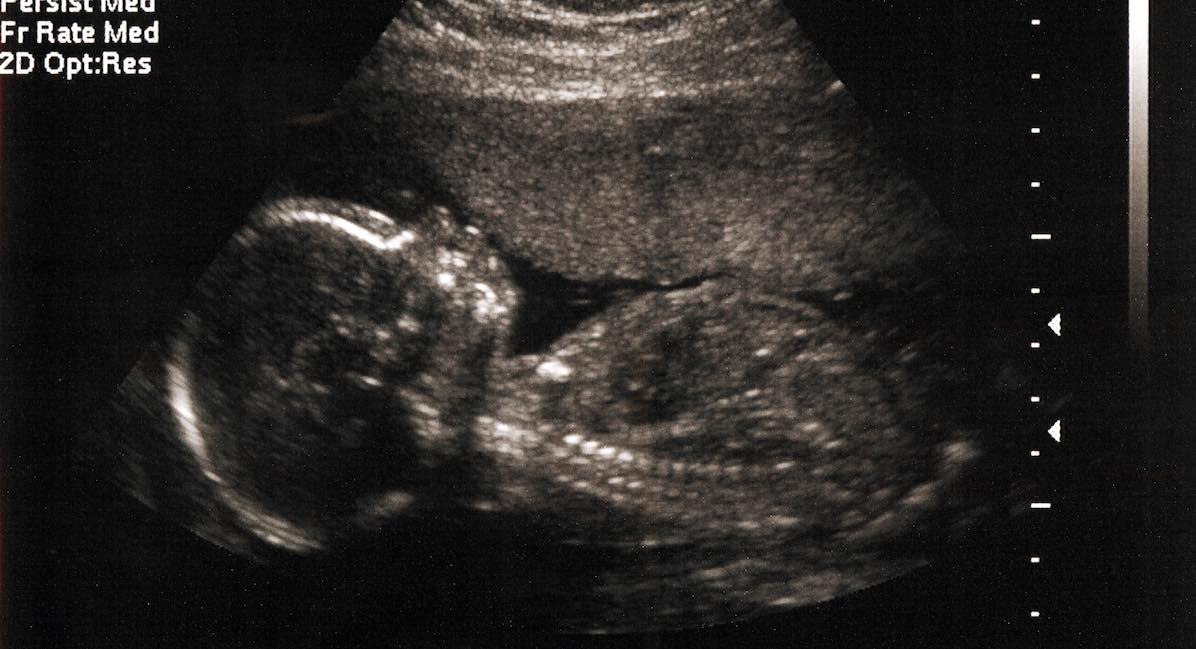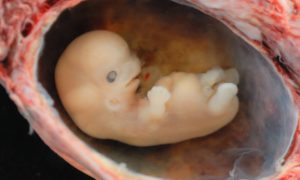A restriction on abortions after 15 weeks gestation could save tens of thousands of preborn babies annually, according to various data reviewed by Live Action News. This analysis comes as the U.S. Supreme Court is slated to hear a Mississippi case later this year to determine whether the state can prohibit “previable” abortions at 15 weeks or later. The case, brought by Thomas E. Dobbs, State Health Officer of the Mississippi Department of Health, is known as Dobbs v. Jackson Women’s Health Organization. Jackson Women’s Health is an abortion business in the state.
At 14 weeks after fertilization (16 weeks gestation), a preborn child can play in the womb and her lips and nose are fully formed, she makes complex facial expressions, and her mother may begin to feel her movements. By 15 weeks post-fertilization (17 weeks gestation), an ultrasound can detect speaking movements in the preborn child’s voice box, and her teeth are beginning to grow.
According to recent studies, preborn babies likely feel pain by the end of the first trimester, if not before.
National data
Since national and state reports do not break down abortions by every gestational week, we can only estimate how many babies’ lives could be spared if the Court decision puts in place a national prohibition on abortions at or after 15 weeks gestation.
The Guttmacher Institute’s most recently published data for 2017 indicates that an estimated 100,897 babies are aborted at 13 weeks gestation (11 weeks post-fertilization) and later. Guttmacher does not break down abortions by each specific week of gestation.
The Centers for Disease Control and Prevention (CDC), which gathers data from state reports, recorded gestational data from 42 reporting areas in 2018, which revealed a total of 39,979 abortions at 14 weeks gestation (12 weeks post-fertilization) and greater.
- 6 weeks or less: 204,770
- 7-9 weeks: 191,059
- 10-13 weeks: 73,854
- 14-15 weeks: 16,058
- 16-17 weeks: 9,644
- 18-20 weeks: 8,936
- 21 weeks and up: 5,341
CDC data excludes excludes California, District of Columbia, Illinois, Maryland, Massachusetts, New Hampshire, Pennsylvania, Rhode Island, Wisconsin, and Wyoming. These states either did not report, did not report by gestational age, or did not meet reporting standards.
However, recently reviewed CDC data from Guttmacher, the former “special affiliate” of Planned Parenthood, estimates that between 54,000 and 63,000 abortions take place annually at or after 15 weeks, and the vast majority are D&E.
“While not every abortion at or after 15 weeks is provided using the D&E method, the vast majority are. Guttmacher estimates that between 6.3% and 7.4% of all U.S. abortions are obtained at or after 15 weeks of pregnancy. Based on 2017 abortion incidence statistics, this means that between 54,000 and 63,000 abortions nationwide occur in this time frame,” Guttmacher wrote.
State data
Data on abortion is not consistent across each state and the data publication times and dates also vary. Some states do not report abortions at all, and others do not report abortions by gestation. Those that do report by gestation can also have varying data, as some combine weeks together (such as 13-15 weeks, for example), making it difficult to calculate abortion totals by a specific week or range of weeks.
Live Action News reviewed several published abortion reports by state, which varied by year. In addition, since the most common form of abortion committed in the second trimester is dilation and evacuation (D&E) or dismemberment abortion, we included those numbers in the chart below, although many states did not record data by procedure.
Here are the findings:

Abortion stats by state 15 weeks and above and D+E various years (Graph Live Action News)
Note: Live Action News recorded only the numbers which were available for 15-week abortions or greater. Therefore, if a state grouped several weeks together as in the previous example of “13 to 15 weeks,” LAN did not record those figures in the chart due to an inability to determine specific counts by weeks. Because of this, it is likely that abortions at 15 weeks or greater are likely much higher than the nearly 17,000 number we calculated.
New York State recorded the largest number of D&E abortions — 5,256 out of a total of 72,548 abortions in 2018. The state also reported that 3,905 abortions were committed at 16 weeks or greater. Massachusetts recorded an estimated 2,603 of the 18,593 total abortions in 2019. In addition, there were an estimated 380 abortions committed at 19 weeks or later, including 10 at 24 weeks or later. And Texas recorded 2,459 D&E abortions in 2020 out of a total of 53,922 abortions. Texas also showed that 1,520 abortions were committed at or after 15 weeks, including eight between 21 to 25 weeks. In 2019, while Pennsylvania recorded 1,512 abortions out of 31,018 total abortions as D&E, the state reported 2,376 abortions were committed at or after 15 weeks.
Earlier this year, Senator Ted Cruz described a D&E abortion to a Congressional panel, stating, “In these abortions a physician cuts and rips apart the unborn child’s body and extracts – piece by piece – arm by arm – leg by leg – what moments before had been a living human being.”
“The unborn child dies the same way as an adult would die would they have been dismembered,” Cruz added. “By bleeding to death as his or her body is torn apart. These abortions, known as dilation and evacuation, or D&E abortions, are horrendous. They have no place in civilized society.”
That sentiment was echoed in the Mississippi law itself, which read in part, “The majority of abortion procedures performed after fifteen (15) weeks’ gestation are dilation and evacuation procedures which involve the use of surgical instruments to crush and tear the unborn child apart before removing the pieces of the dead child from the womb.”
“The Legislature finds that the intentional commitment of such acts for nontherapeutic or elective reasons is a barbaric practice, dangerous for the maternal patient, and demeaning to the medical profession,” Mississippi lawmakers wrote.
Editor’s Note: 8/27/21: This post has been updated since its original publication.
“Like” Live Action News on Facebook for more pro-life news and commentary!







